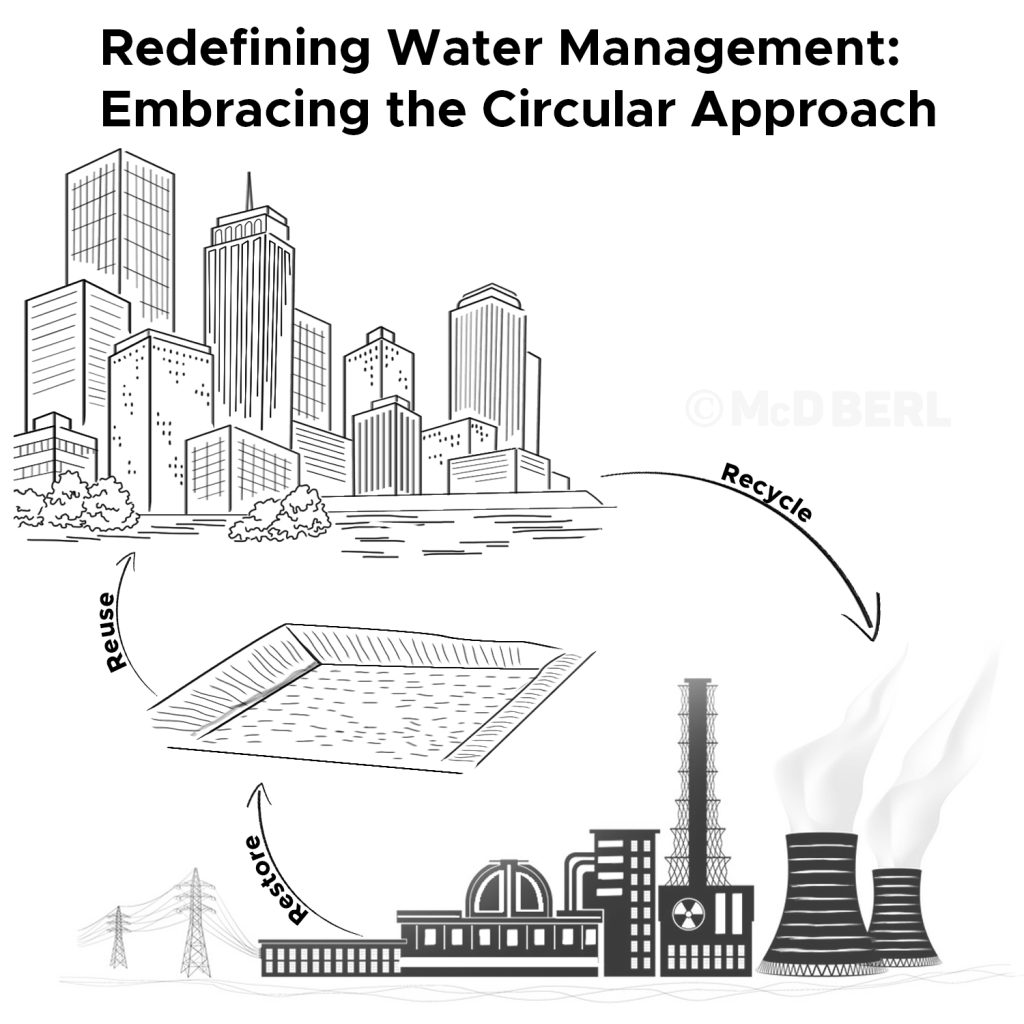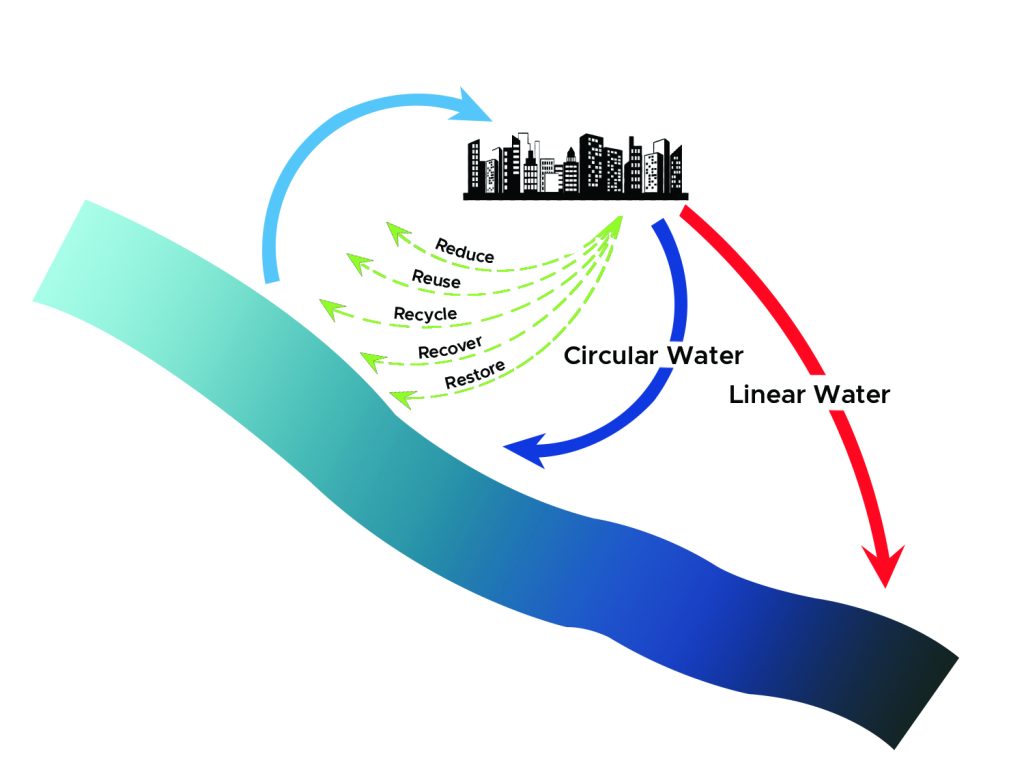Redefining Water Management: Embracing the Circular Approach

As engineers, developers, consumers and policy makers we have too long carried the linear idea in water management; USE and DISHARGE. We need to alter this current unsustainable linear model and introduce a circular water framework that underlines REUSING and RECYCLING water.
At its core, circular water management seeks to follow natural water cycles, where water is continuously reused and replenished. This approach contrasts with traditional linear water management, where water is used once and then disposed of, leading to depletion of water resources and environmental degradation.

Therefore, circular water management emphasises sustainability, efficiency, and resilience. It involves designing systems and practices that minimize water wastage, maximize water reuse, and restore natural water cycles. The concept is gaining traction globally as water scarcity and pollution become increasingly compelling issue.
One of the key principles of circular water management is the integration of various water sources, such as rainwater, surface water, and treated wastewater.
Rainwater harvesting, for example, involves capturing rainwater and storing it for later use, reducing reliance on groundwater and municipal water supplies. Similarly, treating and reusing wastewater can help meet non-potable water demands, such as irrigation and industrial processes, while reducing the strain on freshwater sources.
Furthermore, circular water management encourages the restoration and conservation of natural water bodies, such as lakes, rivers, and wetlands. These ecosystems play a crucial role in regulating the water cycle, recharging aquifers, and supporting biodiversity. Restoring and protecting these ecosystems can help improve water quality and availability, as well as enhance the resilience of communities to climate change impacts.
The idea of a circular water economy is well-established; the International Water Association has taken this further, developing the 5Rs approach to water management:

Benefits of switching to Circular Water
- Cost Savings: Implementing water-efficient practices and technologies, such as rainwater harvesting and water recycling systems, can help reduce water consumption and lower water bills for building owners and tenants. Over time, these cost savings can result in significant financial benefits.
- Resource Efficiency: By reusing water within buildings or developments, developers can reduce their reliance on external water sources, such as municipal water supplies or groundwater.
- Regulatory Compliance: Circular water management can help developers comply government regulations by reducing water consumption and improving wastewater treatment practices.
- Market Differentiation: As sustainability becomes an increasingly important factor for consumers and tenants, buildings and developments that implement circular water management practices can differentiate themselves in the market. This can lead to increased demand and higher property values.
5.Community Engagement: Circular water management can also provide opportunities for developers to engage with local communities and stakeholders. For example, incorporating green infrastructure, such as rain gardens or constructed wetlands, can improve the aesthetics of developments and provide additional environmental benefits.
Overall, circular water management can offer a range of benefits to building developers, by integrating these practices into their developments, developers can not only reduce their environmental impact but also create more sustainable and resilient buildings for the future.




